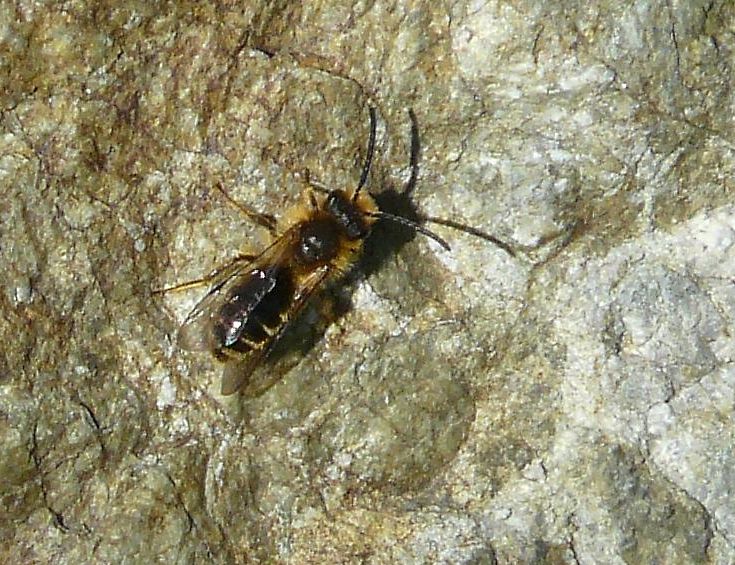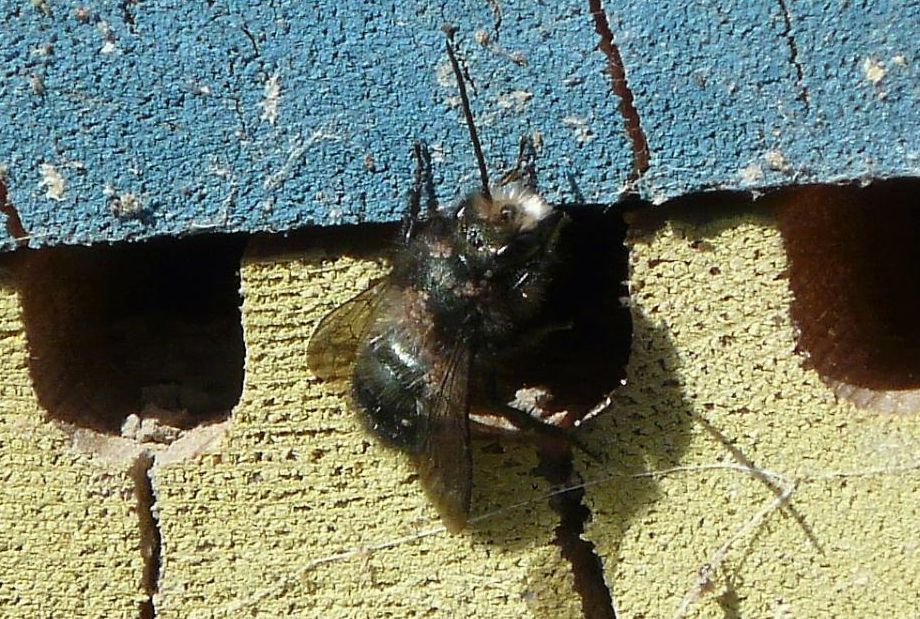April 4
2017 April 4
I spotted an entry on the bcvibirds birdy site saying that Ian Cruickshank had seen a Moss’s Elfin at East Sooke on April 1.
Ron Flower writes: Nora and I went out to Jordan River yesterday and on the way home we stopped at Muir Creek where we got our first butterfly of the year – a rather sad looking Red Admiral. We were sitting on a log at the river mouth about three-ish and it landed right in front of us.
Annie Pang saw her first Cabbage White of the year. She writes: Cool to finally see a butterfly! [We can all relate to that this year.] Annie also photographed two bees. Thanks to Cory Sheffield for identification.


Male mining bee Andrena sp. (Hym.: Andrenidae) Annie Pang

 Male mason bee Osmia sp. (probably O. lignaria) (Hym.: Megachilidae) Annie Pang
Male mason bee Osmia sp. (probably O. lignaria) (Hym.: Megachilidae) Annie Pang
Some musings (by Jeremy Tatum) on the spelling of Sara Orangetip. Orangetip, Orange-tip, Orange-Tip and Orange Tip are all seen. If any principle is to be called upon, I suppose that it would make sense to try to be consistent with other butterfly names. I think we always spell Swallowtail thus, not Swallow-tail or Swallow-Tail or Swallow Tail. Consistency of spelling, then, would seem to suggest Orangetip, Duskywing, etc.
As for Sara versus Sara’s, Edith versus Edith’s or Editha. Well, Milbert’s Tortoiseshell is named, I think, in honour of Mr Milbert. (Actually, I think, M. Jacques-Gérard Milbert, so we’d better start to pronounce it Meelberre.) But no one seems to know who Sara or Edith were. For the English name of Anthocharis sara, we should just be guided by what we do for Speyeria hydaspe amd Speyeria zerene, and just repeat the specific name. Thus the Sara Orangetip, consistent with the Hydaspe Fritillary. It would be different if we knew who, if anyone, Sara was. Also, I don’t know what “sara” means, if anything, in Latin. Scientific names don’t have to be Latin – although they are usually made to look like Latin, and to follow Latin grammar. If the butterfly were named after someone called Sara, the Latin for “Sara’s” would be Sarae, and the scientific name would have been given as sarae.
Of course if the argument that I have just given for Anthocharis sara is extended to Euphydryas editha, and there is no real Edith, we should have to refer to the Editha Checkerspot, though I doubt if this would take on.
